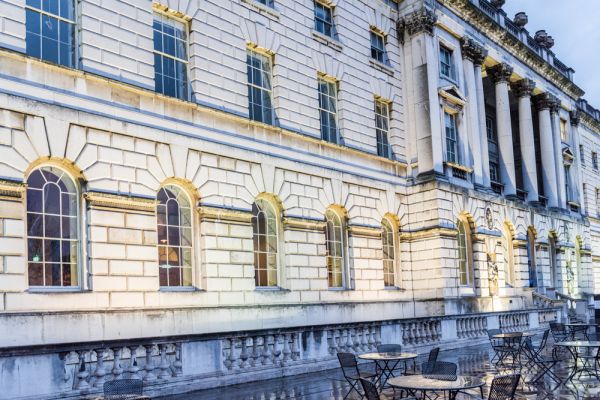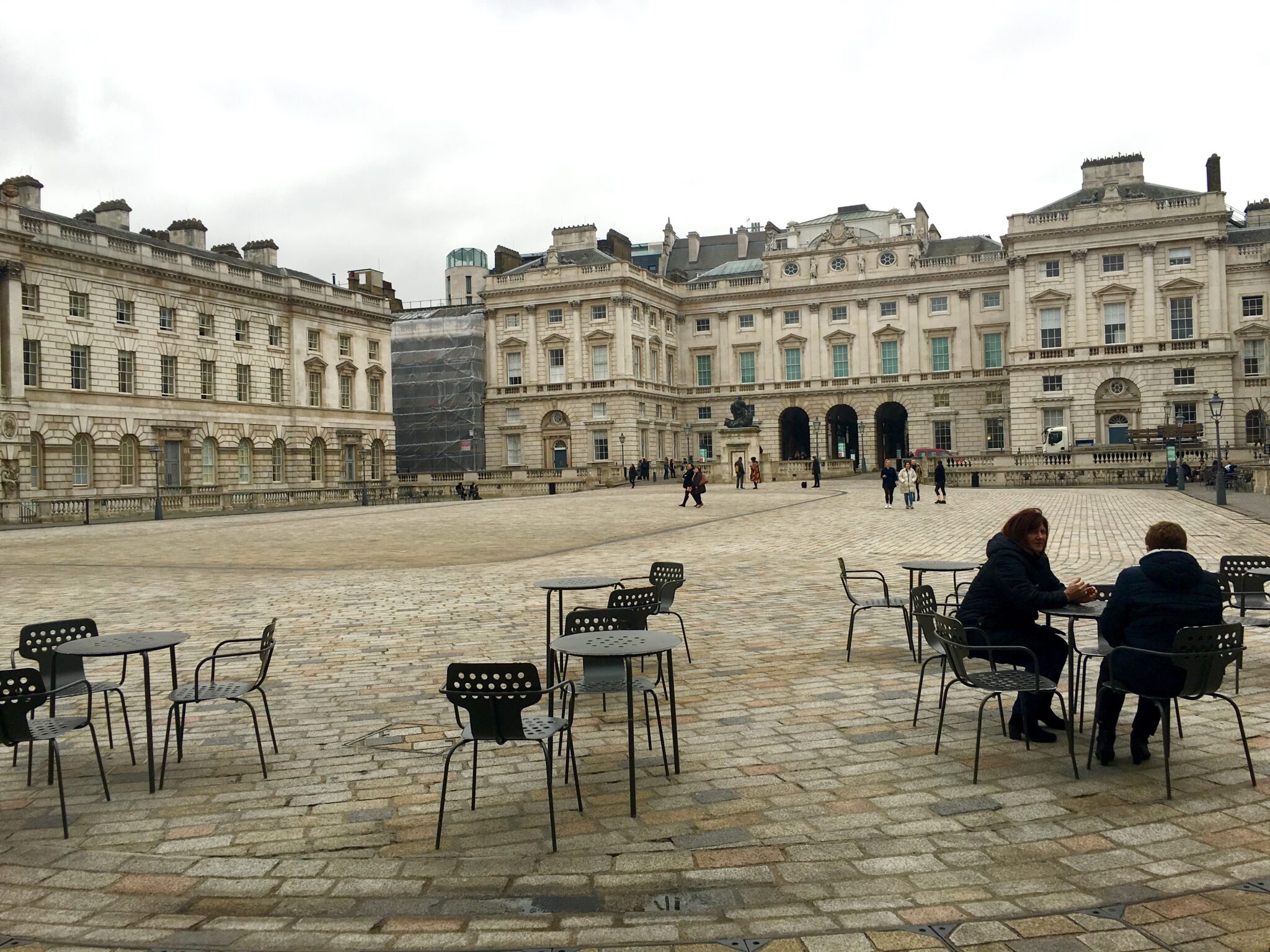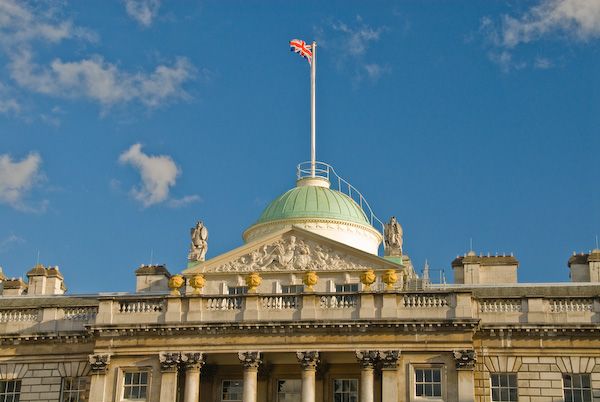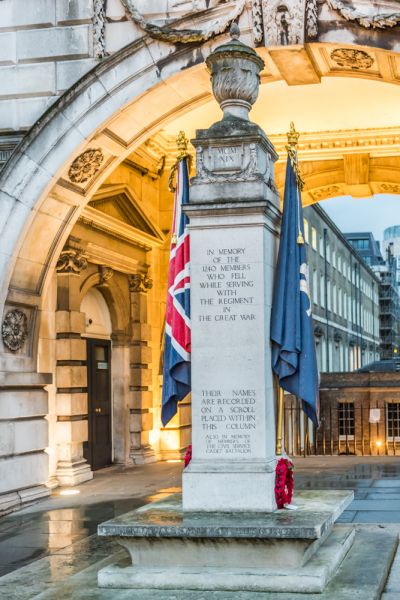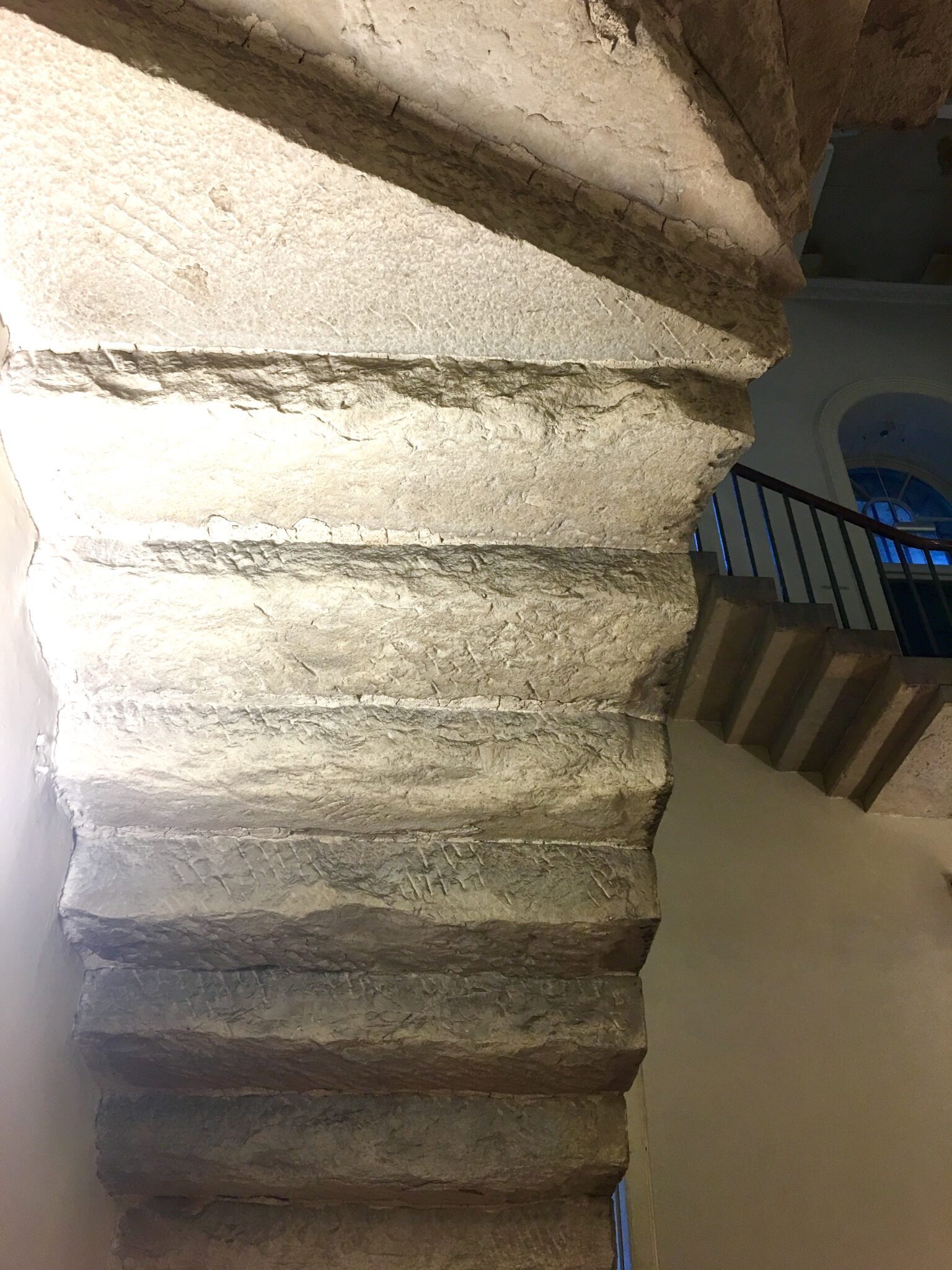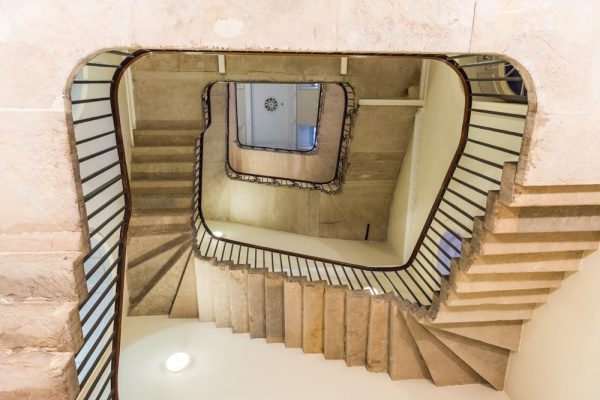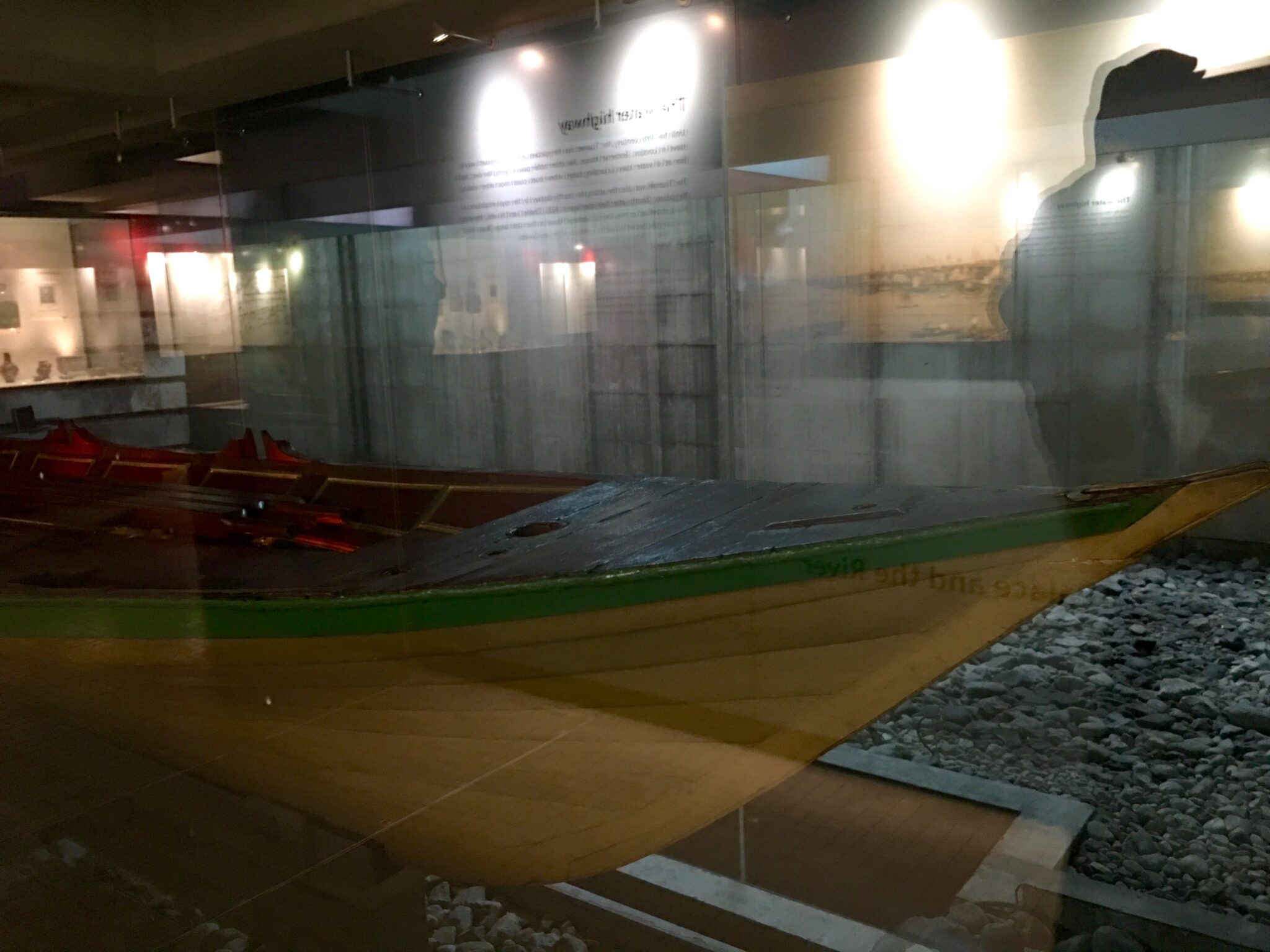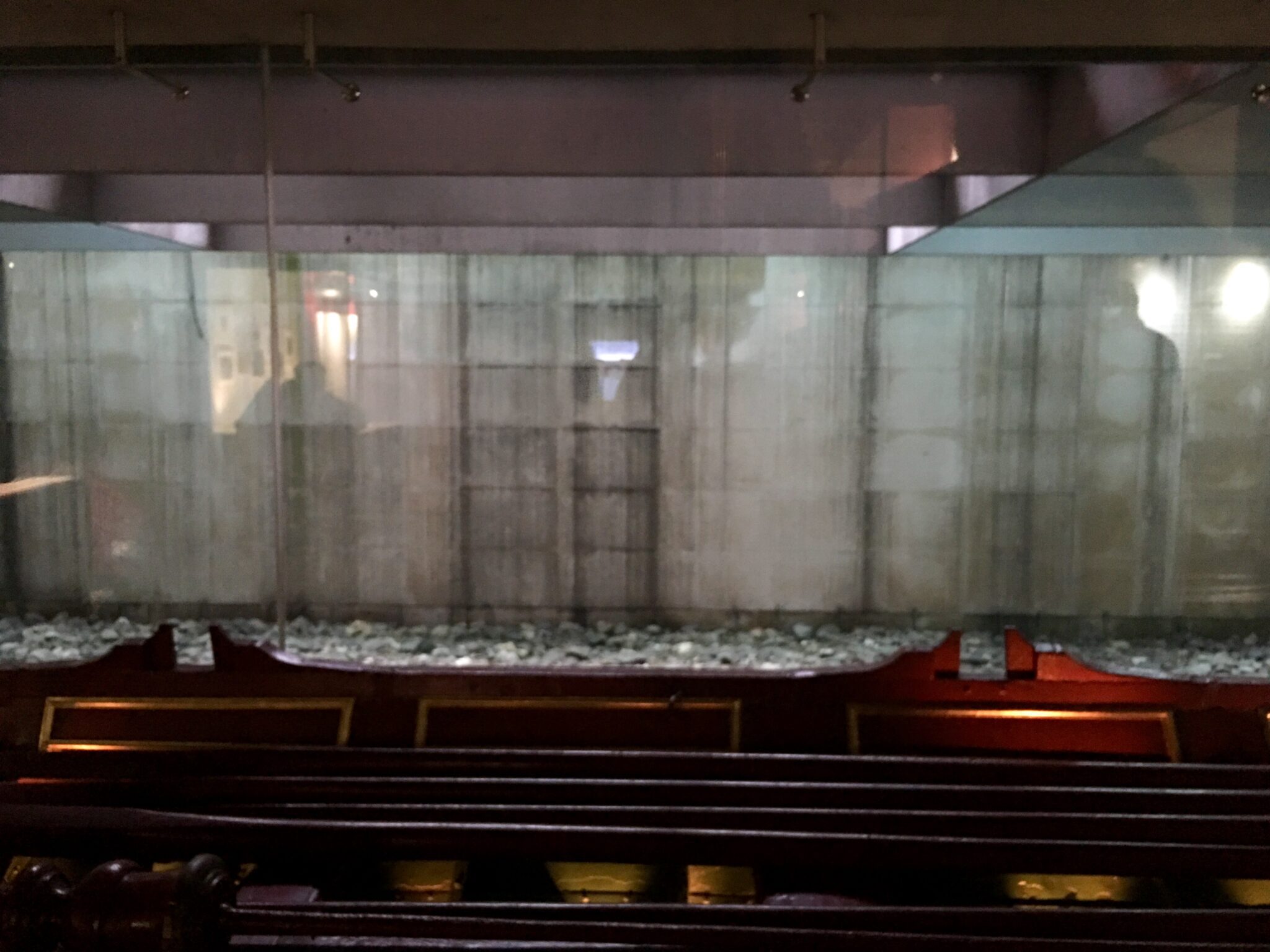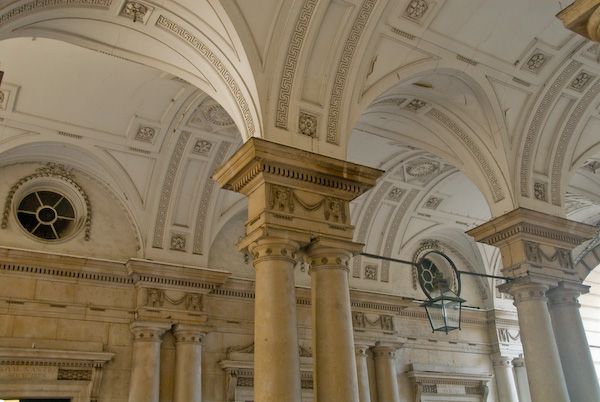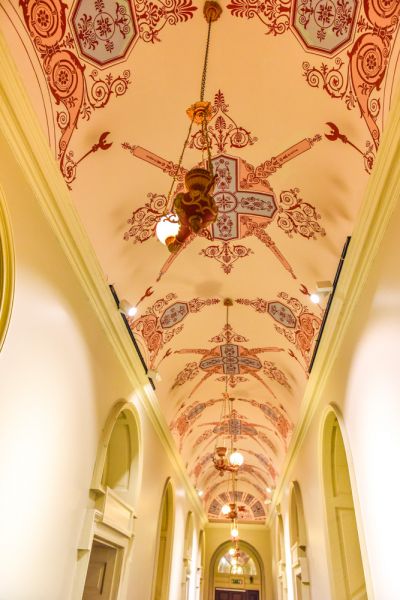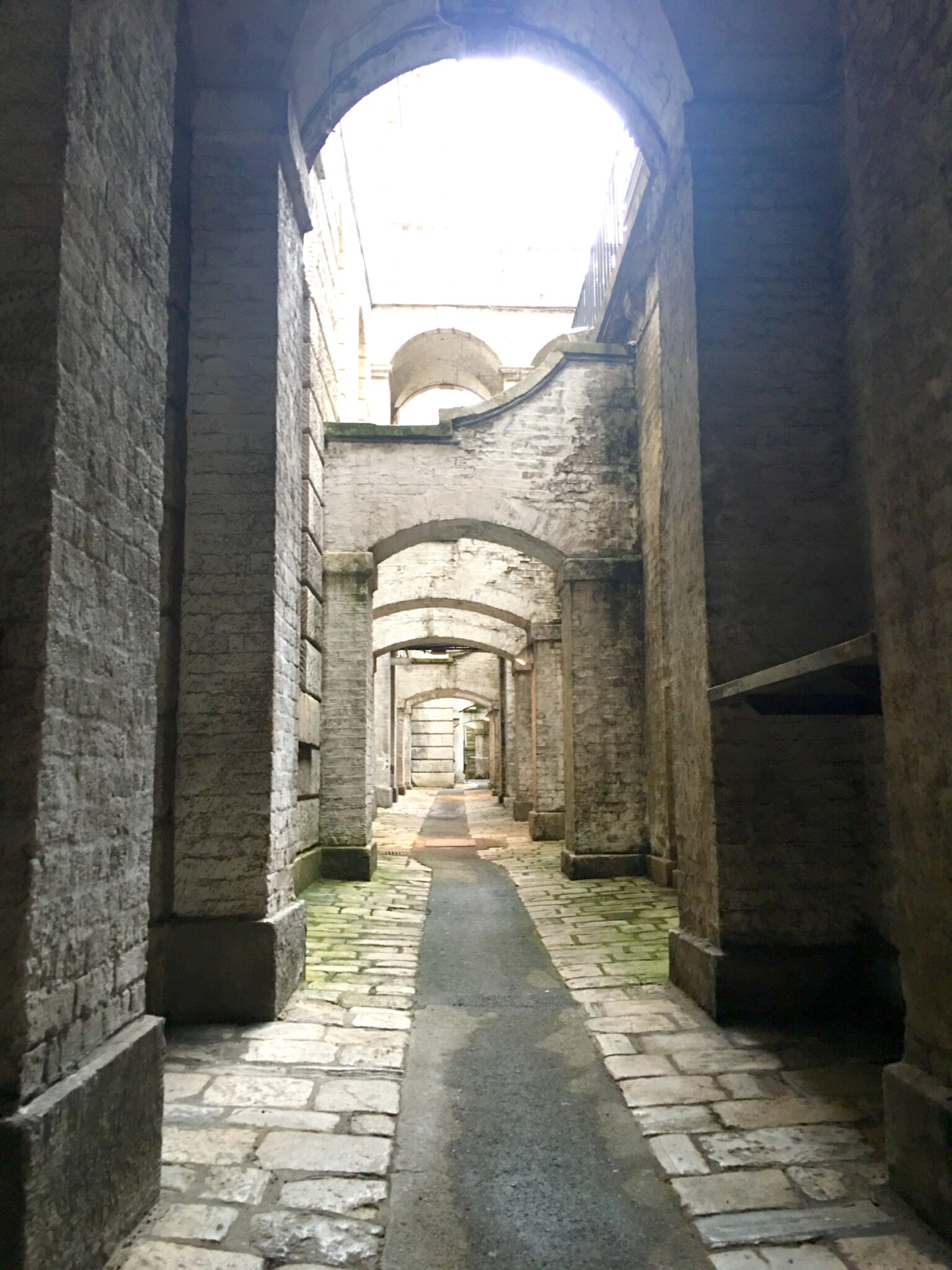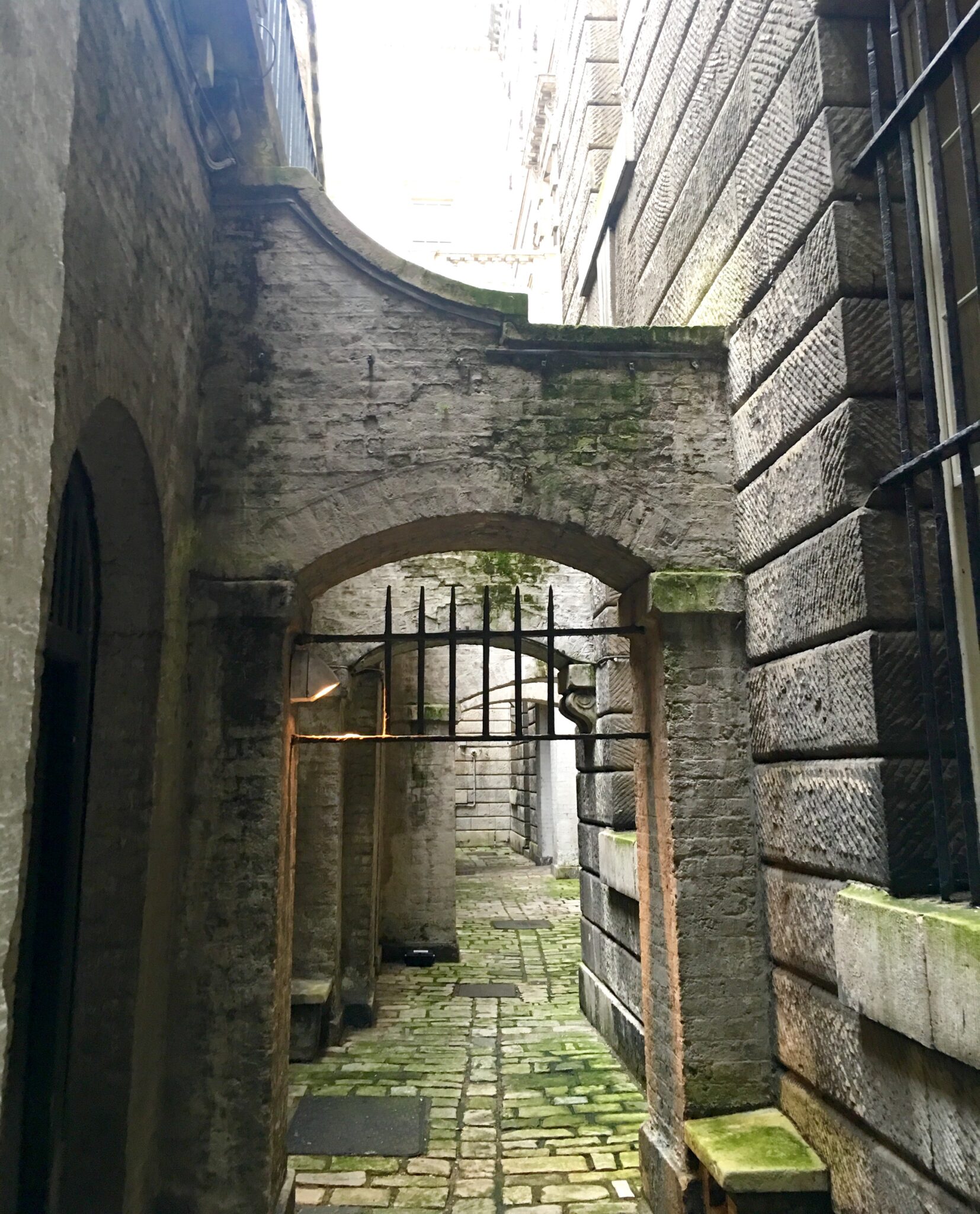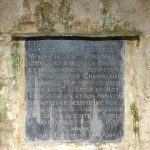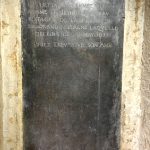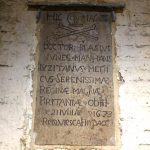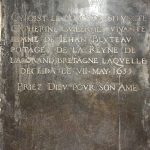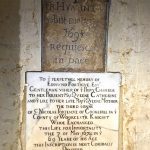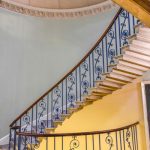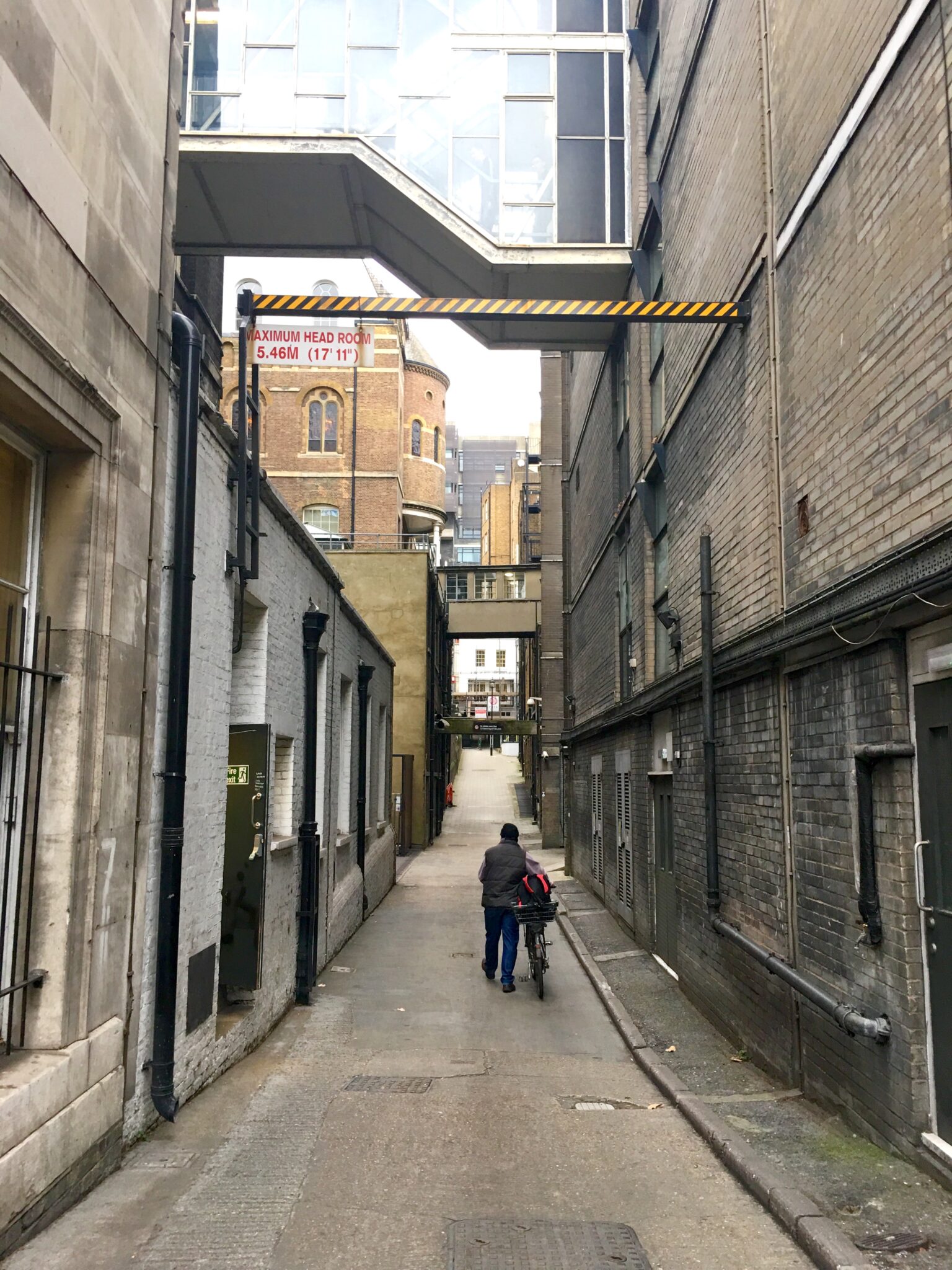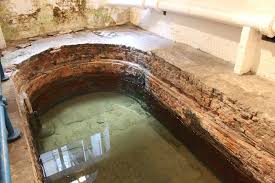Tour of the Somerset House
It was quite an experience to explore Somerset House. I always associate this building with London Fashion Week (LFW) as it has been used as the main venue for this event since 2009. I had no idea until a couple of months ago that this iconic building has a remarkable history and was once an old palace and home to three queens, Anne of Denmark, Henrietta Maria and Catherine of Braganza.
The wings on both sides of the central courtyard are occupied by gallery spaces, and International Fashion Showcase AW 2017 was held there. The central block is an enormous space with several cafes, and at the back is a long terrace overlooking Thames River.
Originally built as a palatial home for Edward Seymour, the 1st Duke of Somerset, in 1547, this old palace has evolved more than any other buildings of the Tudor age. When Henry VIII died, his son and heir to the throne, Edward VI, was only nine year old, and too young to rule the country. The king’s will named sixteen of his trusted courtier as executors that were supposed to act as his son’s council. Well, that did not happen! Edward Seymour (top left photo), the oldest brother of Jane Seymour, Henry VIII’s third wife, and uncle of Edward VI (top right photo), proclaimed himself as ‘Lord Protector’. His oldest brother, Thomas, who became his main rival and critic, gained more influence by marrying King Henry’s widow and sixth wife, Catherine Parr. To make a long story short, the Duke of Somerset ruled as an autocrat, lost royal favour and held power for only two and a half years, 1547 – 1549. In 1551 he was imprisoned and four months later was beheaded at the Tower of London.
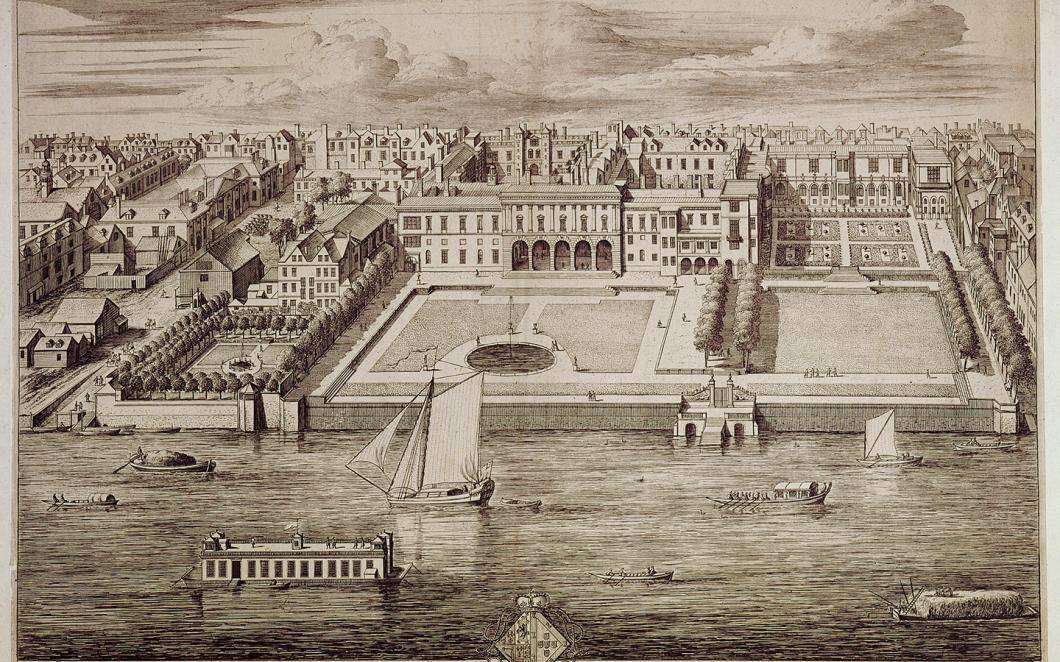
The ownership of the palace was then passed to the Crown after the death of the Duke of Somerset. No painting or drawing of the original building survived (and remember, photography in the Middle Ages was non-existent), so our tour guide showed us a drawing (top photo) by an unknown artist based on the detailed description of the palace by a Tudor writer.
The beautiful London landmark we see today has gone through decades of changes – demolition, reconstruction and expansion. Princess Elizabeth, the last monarch of the Tudor dynasty, lived at Somerset House from 1553 until she was crowned ‘Queen Elizabeth I of England and Ireland’ in 1558.
In 1609 Queen Anne of Denmark, wife of James I, commissioned Inigo Jones to redesign and rebuild parts of Somerset House and renamed it ‘Denmark House.’ In 1625 Charles I was crowned king, and his wife, Henrietta Maria of France, asked Inigo Jones to undertake more renovation work. After the death of Charles I, Henrietta Maria returned to Denmark House and made it her home but during the Great Plague she moved back to France, where she died in 1669. The country became a republic under the leadership of Oliver Cromwell and he turned Denmark House into a military barracks. After Cromwell’s death, Charles I’s son returned to England from France and was crowned King Charles II. His wife, Catherine of Braganza, moved into Denmark House and asked Sir Christopher Wren to oversee the renovation work of the palace. The building stayed in royal hands until 1645 when the Parliament took over the ownership of the building and decided to revert back to its original name, Somerset House. But the building was neglected, eventually fell into disrepair, and demolished in 1775. The construction of the new Somerset House began on the same year and took sixteen years to complete. The famous architect of the era, William Chambers, oversaw its planning and construction and after his retirement he was replaced by James Watt, another notable architect of the age. Chambers created a grand building in neo-classical style, arranged around a central courtyard, an in 1835, Chambers’ original design was extended with the addition of an east wing designed by Robert Smirke.
The ‘upstairs and downstairs’ social division is clearly seen in the stone work, both in the interior and exterior design of the building. As you can see, the rough stone work is visible from the basement up to the ground floor, and from the first floor up, the stone work is very smooth (top photos).
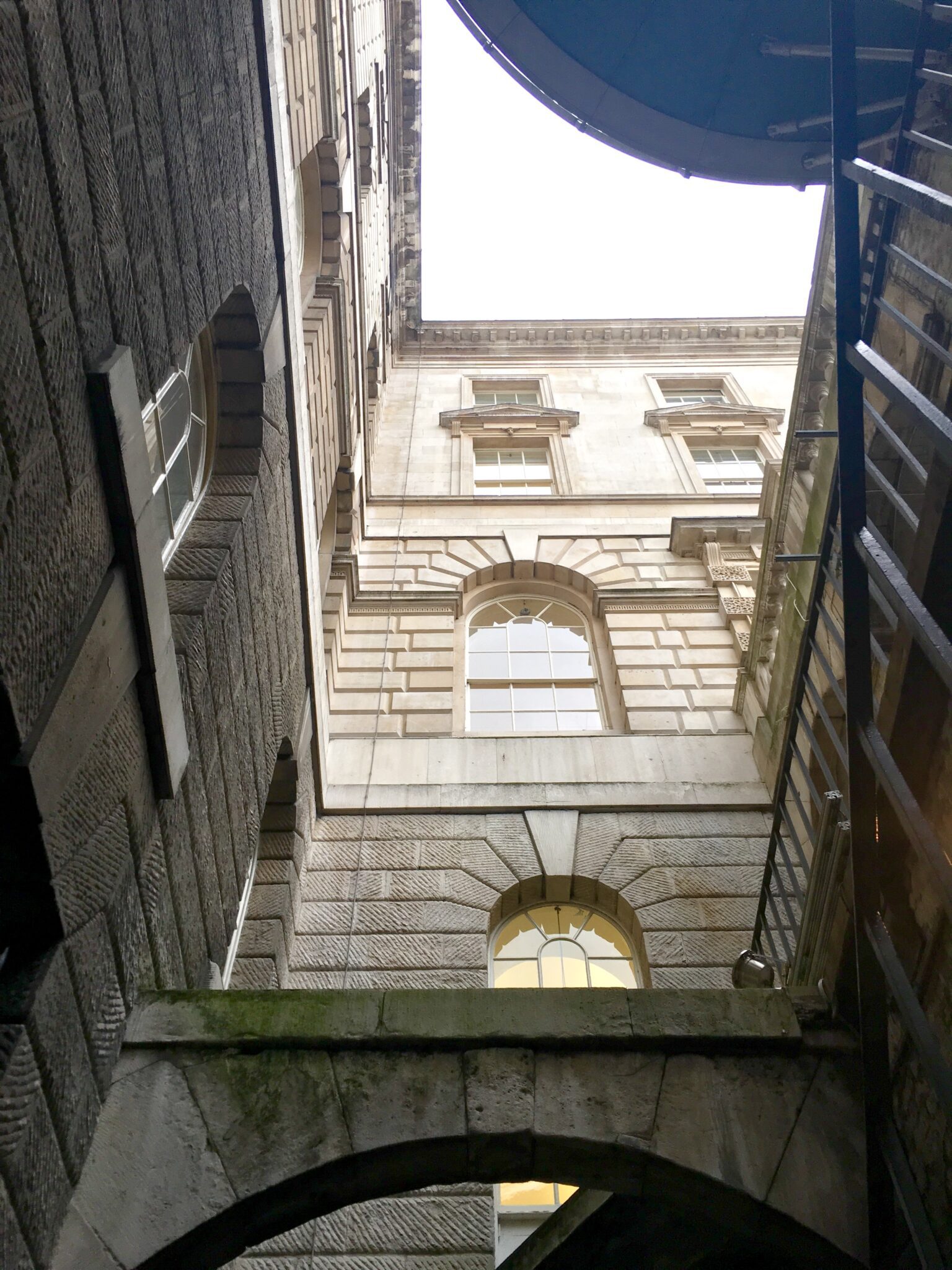 One interesting bit of the tour . . . I saw for the first time the side wall of London’s sewage system that was built in 1858 — pictures below show the gravel and the royal barge. Evidently, boats could moor inside Somerset House before Thames Embankment was built.
One interesting bit of the tour . . . I saw for the first time the side wall of London’s sewage system that was built in 1858 — pictures below show the gravel and the royal barge. Evidently, boats could moor inside Somerset House before Thames Embankment was built.
We went to the basement through a set of narrow steps (two floors down) where the royal barge and some artefacts were on display.
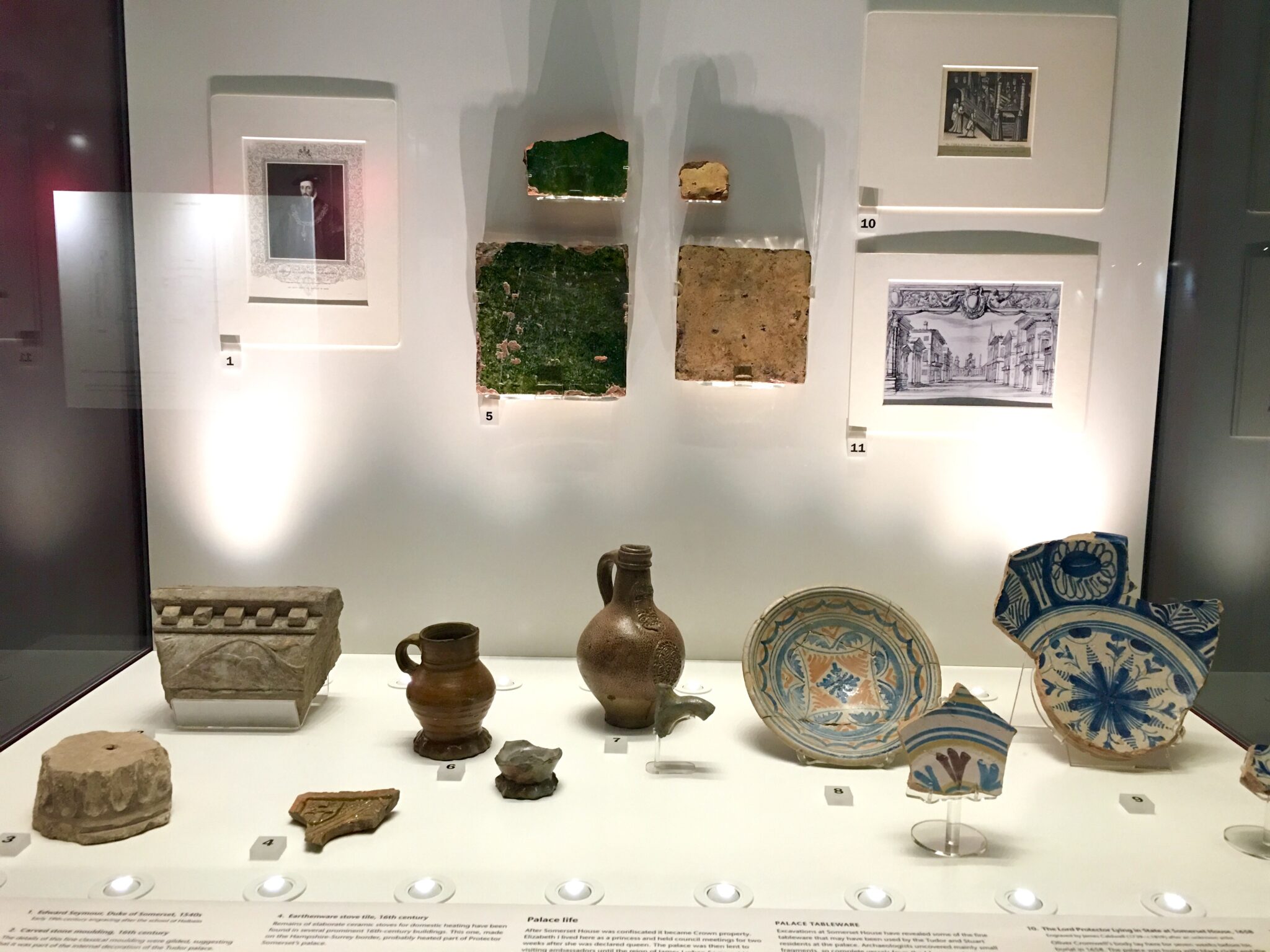 A real highlight of the building’s interior include very striking design of the ceiling, staircases, etc.
A real highlight of the building’s interior include very striking design of the ceiling, staircases, etc.
Exploring the basement was captivating but a little bit disturbing . . .
Walking through the long, dark corridors and passing by several black doors leading to the ‘Dead House’ was rather creepy. When William Chambers demolished the old Somerset House that Inigo Jones designed, all he took was five gravestones from the chapel of Queen Henrietta Maria and moved it to the basement.
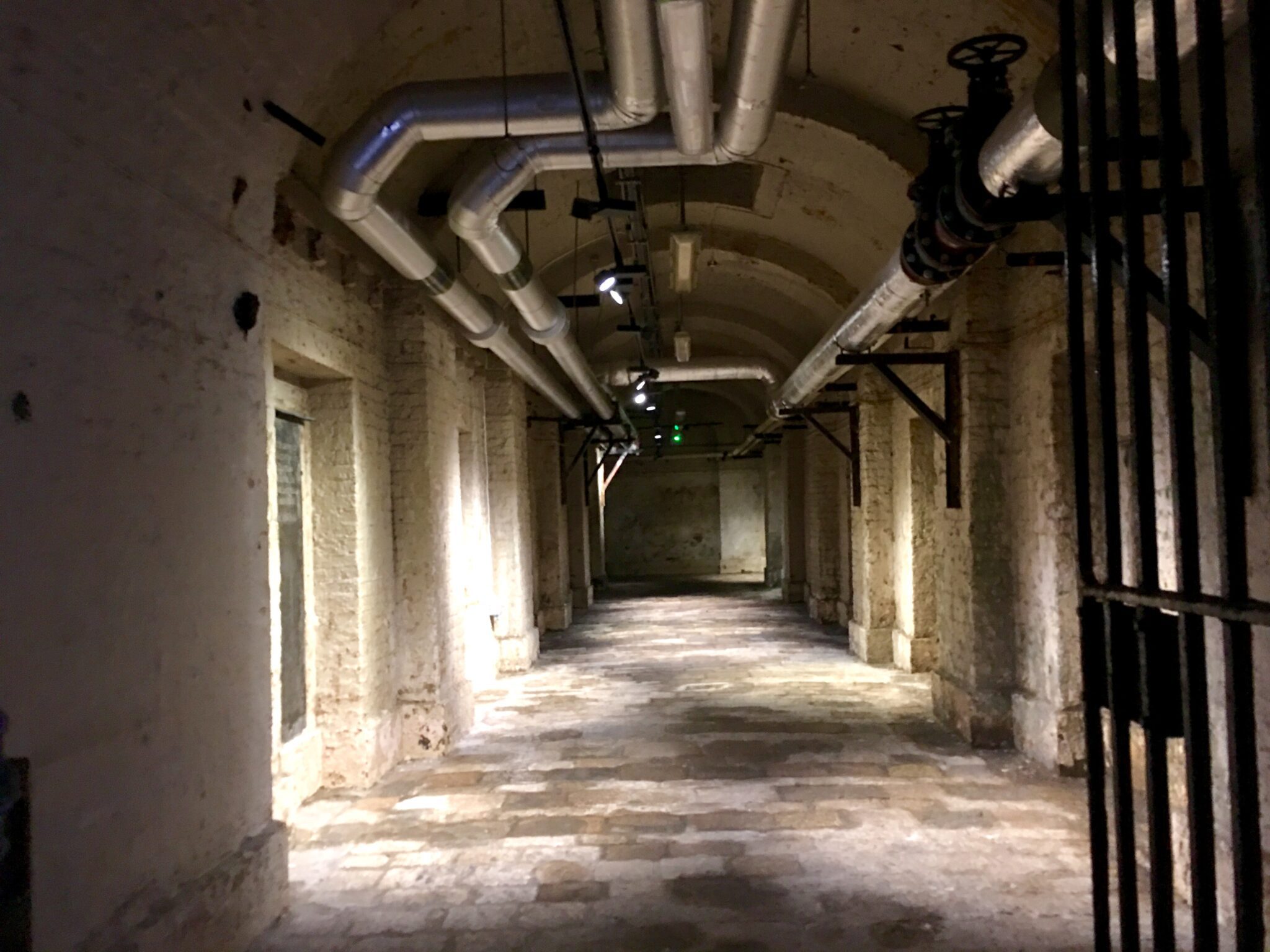
Five of Braganza’s entourage, including her doctor came with her from France when she married Charles I. They were buried in her chapel and the gravestones in the Dead House indicate their names, birthdate, deaths, jobs, etc.
Back then London was the most crowded, grimiest city in the world; life was rough and life expectancy was short. Evidently, some of the queen’s servants died very young.
Somerset House had been used by several government agencies over the years such as the Royal Navy Board; the General Register Office (responsible for births, deaths and marriages), the Stamp Office and the Board of Taxes (Inland Revenue and later HMRC-Her Majesty’s Revenue and Customs). It was also the first home of the Royal Academy of Arts. HMRC left in 2011 and Somerset House is now used only as an arts centre. (Above photos of the Navy Staircase, known today as the Nelson Stair, is one of the many interesting features of the building.)
The tour ended at The Strand Lane Baths, about five minutes walk from Somerset House. Just like Somerset House, it’s located uphill, two-storey level or 44 foot drop to Thames River. It’s mistakenly identified as a Roman Bath by the Victorians. However, it’s the remaining portion of a water reservoir (top right photo) built in 1612 to feed the two fountains in the gardens of the old Somerset House.
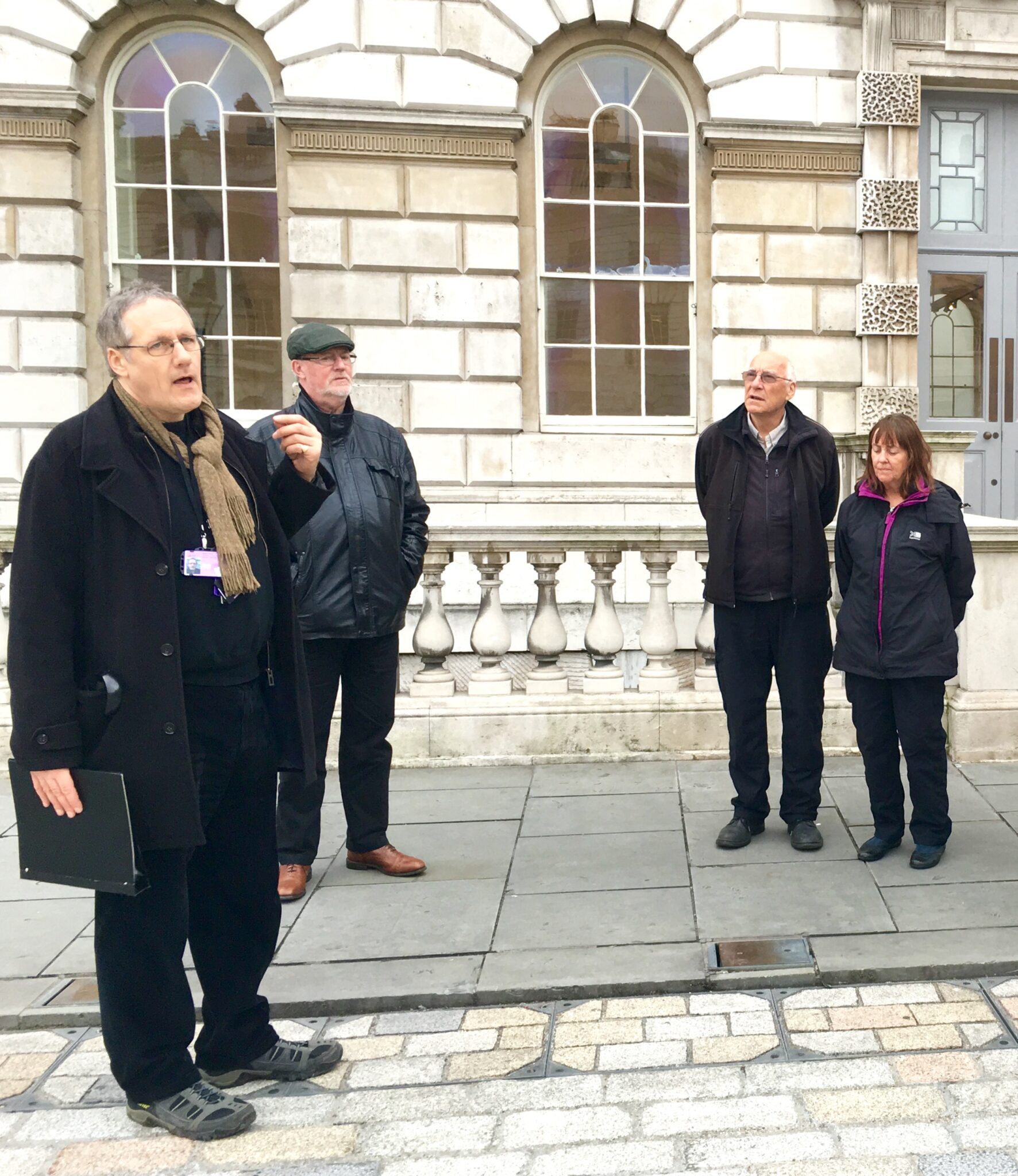
Not very many people seem know about this tour. When I did it, there were only four of us, I was the youngest, everyone else was in their 60s. Anyone interested to join the tour can go to the main reception of the Somerset House on Tuesday morning to sign up for the tour. It’s free of charge and limited to six people per group, only two groups at 12:30 pm and 2 pm. I really enjoyed the tour and would love to do it again.
